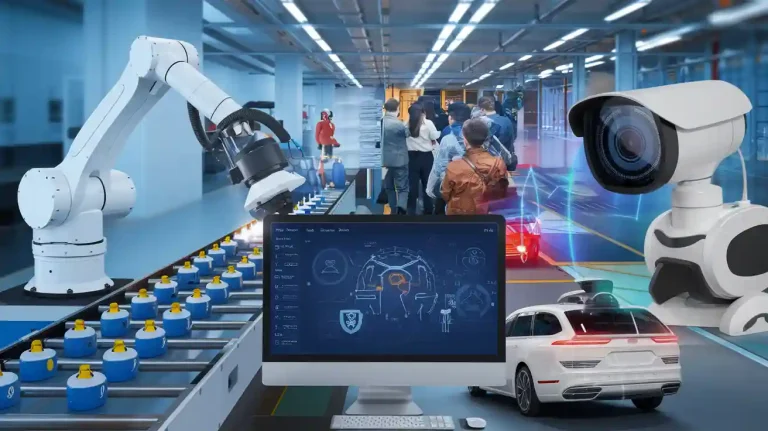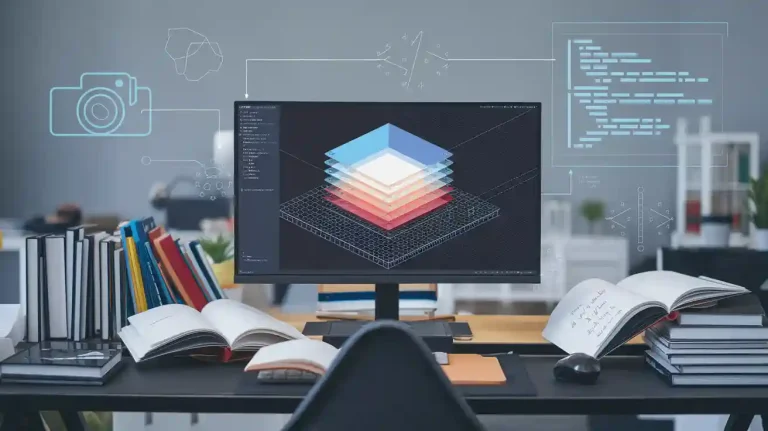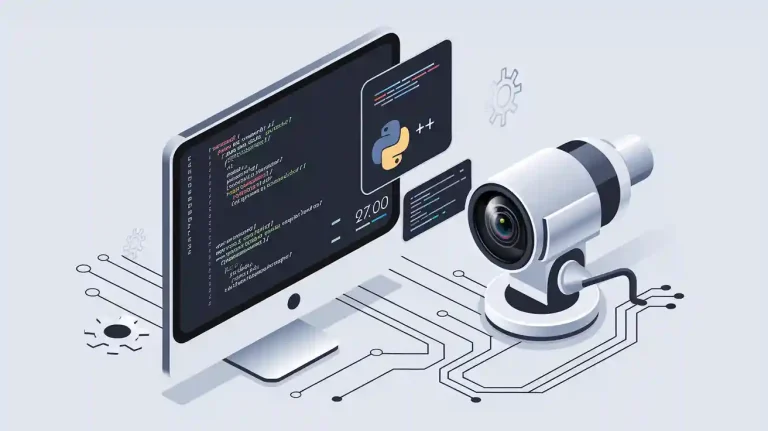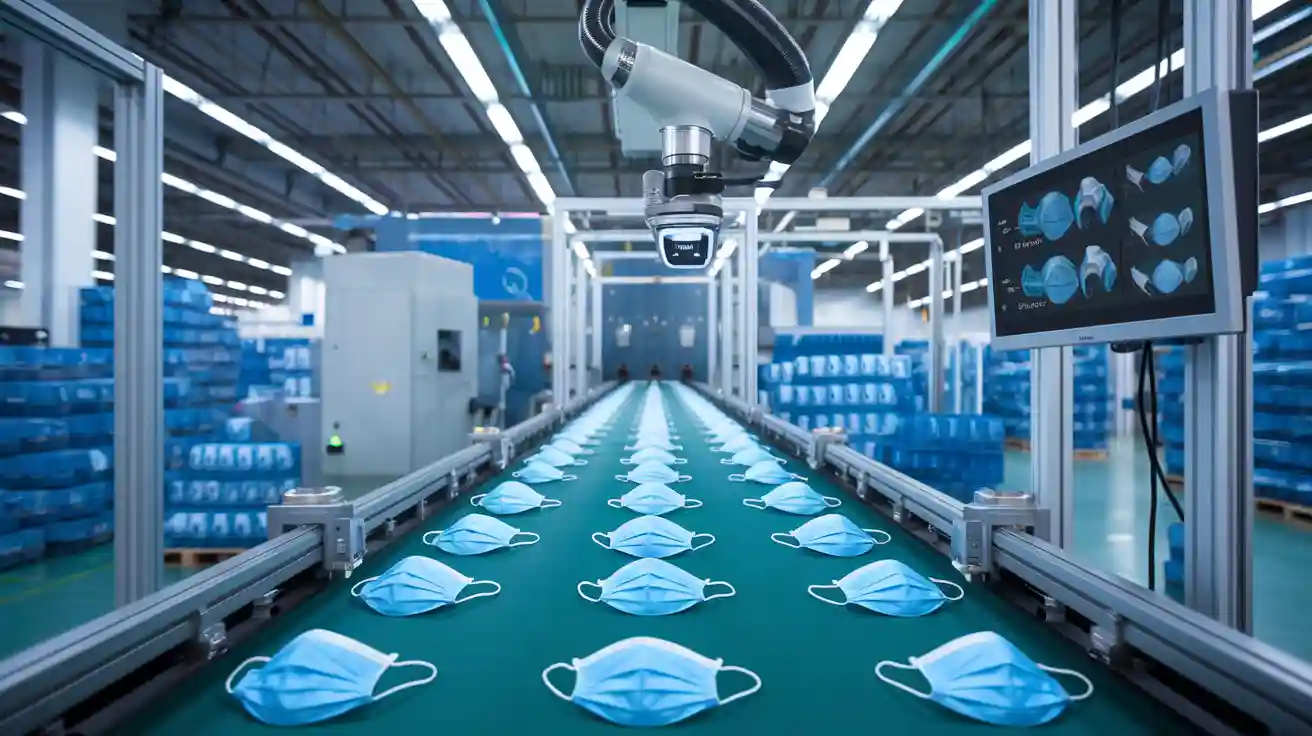
A mask machine vision system transforms mask manufacturing by ensuring safety, efficiency, and cost control in every workplace. Advanced computer vision and machine learning scan each mask with precision, reducing defects and supporting public safety. These systems adapt to lighting and positional changes, minimizing downtime and maintenance. By automating inspection, mask factories achieve higher workplace safety and meet strict safety standards. Enhanced object recognition and real-time correction help deliver consistent quality, which protects public safety and upholds workplace reliability.
Key Takeaways
- Mask machine vision systems catch tiny defects in masks quickly and accurately, ensuring every mask meets strict safety standards.
- Automated inspection reduces human errors and speeds up production, helping factories maintain high quality even during busy times.
- These systems lower labor costs and reduce waste by preventing defective masks from moving forward, saving money and protecting the environment.
- Mask machine vision systems improve workplace safety and build customer trust by guaranteeing reliable, compliant masks.
- The systems easily integrate with existing equipment and adapt to future changes, helping factories stay efficient and ready for new standards.
Quality with Mask Machine Vision System
Real-Time Defect Detection
Masking machine vision systems deliver unmatched quality control in mask production. High-resolution cameras and deep learning algorithms, such as YOLOv3 and Mask R-CNN, enable advanced detection of even the smallest flaws. These systems scan every mask in real-time, ensuring that each product meets strict safety standards before leaving the factory.
Real-time monitoring allows manufacturers to catch defects instantly, preventing faulty masks from reaching the market and protecting public health.
Common quality issues detected by masking machine vision systems include:
- Micro-defects like surface anomalies and cracks
- Discolorations and structural deviations
- Flaws invisible to the human eye but critical for safety standards in medical and industrial settings
Preprocessing techniques, such as filtering and contrast adjustment, enhance image clarity. This improvement supports accurate detection and reliable mask compliance, even in challenging environments.
Masking machine vision systems outperform manual inspection by a wide margin. Manual inspection often results in an average false detection rate of 18.7%. In contrast, Mask R-CNN-based systems achieve over 94% detection accuracy. Direct comparisons show that new machine vision systems reach detection rates as high as 97.2%, while legacy manual systems lag behind at 93.5%. This leap in detection accuracy ensures that every mask meets enhanced safety standards and reduces the risk of defective products.
The following table compares the performance of popular deep learning models used in face mask detection:
| Model | Accuracy / mAP@IoU(0.5) | Stability (std) | F1-score | Detection Speed (fps) | Notes |
|---|---|---|---|---|---|
| YOLOv3 | ~70.08% mWA | Some instability | N/A | 30 | Baseline defect detection accuracy; less stable for some defect types |
| YSODA (YOLOv3-based) | 91.3% accuracy | Improved | N/A | 24 | Enhanced multi-scale feature detection; better small defect detection |
| Mask R-CNN | Up to 82.57% mAP | More stable | ~87% | ~5-7 (slower) | Highest accuracy and stability; slower detection speed; weaker on small defects |
| YOLOv4 | Higher mAW than YOLOv3 | Less stable | Higher F1 than YOLOv3 | Faster than Mask R-CNN but slower than YOLOv3 | Mixed performance; better in some metrics but less stable than Mask R-CNN |
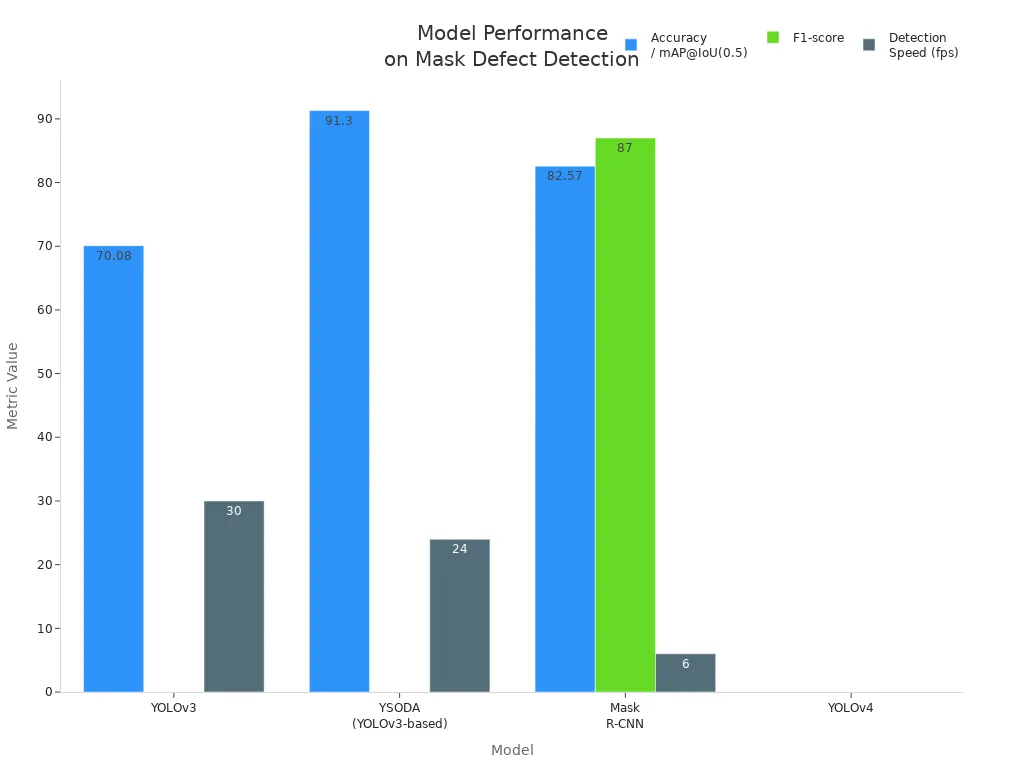
A fusion transfer learning approach using Efficient-YOLOv3 and EfficientNet has achieved 97.84% accuracy in classifying qualified and unqualified face masks. This level of detection accuracy demonstrates the power of advanced detection technologies in real-world mask detection.
Masking machine vision systems also use segmentation models for pixel-level defect mapping. This capability allows precise measurement of defect size and severity, which is essential for meeting safety standards and mask compliance. Unlike traditional rule-based systems, AI-driven masking machine vision systems adapt to new mask types and changing lighting conditions, providing continuous monitoring and real-time feedback.
Standards Compliance
Meeting safety standards is not optional in mask manufacturing. Masking machine vision systems ensure every mask passes strict compliance checks. These systems provide 100% inspection coverage, which manual inspection cannot match. Real-time monitoring and automated detection guarantee that each mask aligns with industry and regulatory standards.
Masking machine vision systems integrate edge computing for instant decision-making. This integration reduces inspection time and labor costs while improving detection accuracy and consistency. Manufacturers benefit from real-time monitoring, which prevents defective masks from advancing in the production line. Automated sorting and immediate feedback help maintain compliance with enhanced safety standards.
Masking machine vision systems transform quality control from a manual process into a proactive, data-driven approach. This shift leads to near-zero defect rates and faster production cycles.
The adaptability of masking machine vision systems ensures that factories can respond quickly to new safety standards and mask compliance requirements. These systems support face mask detection, surface inspection, dimensional accuracy, and assembly verification. As a result, manufacturers achieve higher detection accuracy and maintain compliance with evolving standards.
Masking machine vision systems represent a scalable solution for continuous monitoring and real-time detection. By leveraging deep learning algorithms and high-resolution imaging, these systems set a new benchmark for quality and compliance in mask production.
Efficiency in Mask Detection
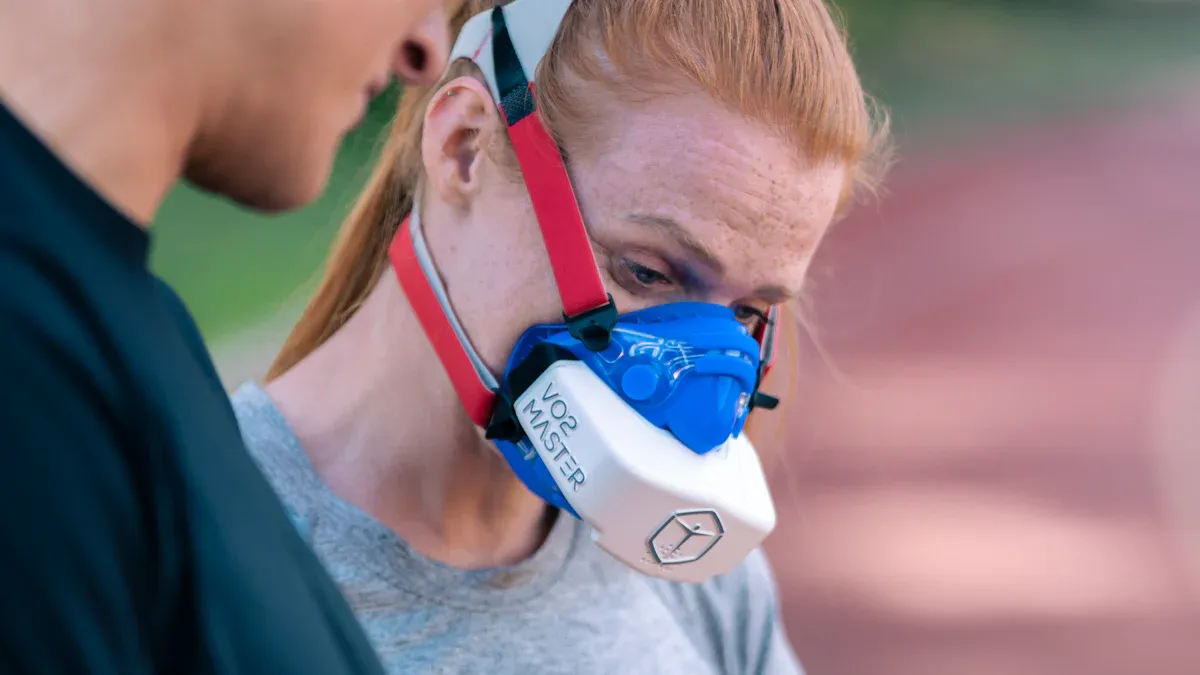
Automated Inspection
Masking machine vision systems bring a new level of efficiency to mask detection. These systems use advanced cameras and AI to inspect every mask quickly and accurately. Automated inspection means each mask passes through a face mask detection system that checks for defects without slowing down production. The process does not rely on human speed or attention. Instead, the system performs detection at a consistent pace, even during long shifts.
Real-time monitoring allows factories to spot problems as soon as they appear. The system can flag masks with defects, remove them from the line, and keep only the best products moving forward. This approach reduces the risk of faulty masks reaching customers. Automated inspection also supports high-volume production, making it easier for factories to meet demand during busy periods.
Automated mask detection ensures every mask meets strict quality standards, even when production speeds increase.
Masking machine vision systems also help with face mask detection by checking for correct assembly and packaging. The system verifies that each mask has the right shape, size, and label. This level of detection keeps errors low and quality high.
Minimizing Human Error
Human inspectors often miss small defects, especially during repetitive tasks. Masking machine vision systems reduce these errors by automating the detection process. The system uses pattern recognition and AI image analysis to spot flaws that humans might overlook. Real-time monitoring ensures that only flawless masks reach customers.
Common human errors that masking machine vision systems help reduce include:
- Missed defect detection due to fatigue or distraction
- Inconsistent inspections from subjective judgment
- Errors in checking mask dimensions
- Mistakes in label and packaging verification
Pretrained models in these systems improve detection precision and efficiency. They analyze visual data in real-time, which boosts productivity and quality control. By removing the risk of oversight and fatigue, factories can trust that each mask meets safety and quality standards.
Masking machine vision systems provide reliable monitoring and detection, making them essential for any modern mask factory. With these systems, manufacturers achieve consistent results and maintain a strong reputation for safety.
Cost Savings with Masking Machine Vision Systems
Lower Labor Costs
Masking machine vision systems help mask factories lower labor costs by automating inspection tasks. These systems use cameras and AI to check each mask for defects, which means fewer workers are needed for manual inspection. Factories can reassign staff to other important jobs, making better use of their workforce.
Many factories see a strong return on investment after installing masking machine vision systems. The systems reduce labor costs and scrap rates, which leads to significant savings over time.
Masking machine vision systems also improve productivity. They inspect masks faster and more accurately than people. This speed reduces the need for manual corrections and helps factories meet high production demands. The initial investment for a basic system ranges from $1,300 to $10,000, but the long-term savings often outweigh the costs. Over time, the benefits—such as labor savings, fewer defects, and better workflow—can pay for the system and increase profits.
Reducing Waste
Factories that use masking machine vision systems produce fewer defective masks. These systems use advanced cameras, sensors, and AI to spot defects quickly and accurately. By catching problems early, they prevent faulty masks from moving forward in the production line. This process reduces material waste and saves money on raw materials.
Masking machine vision systems support sustainability in several ways:
- They automate defect detection, which lowers human error.
- They ensure consistent product quality, reducing the number of defective masks.
- They increase production yield and help factories follow regulations.
- They inspect hundreds or thousands of masks per minute, which manual inspection cannot match.
- They use AI and machine learning to improve detection accuracy and adapt to new mask types.
By reducing waste, masking machine vision systems help factories save money and protect the environment. These systems also improve customer satisfaction by delivering high-quality masks every time.
Safety and Reputation
Reliable Mask Detector
A reliable mask detector plays a vital role in maintaining safety in every mask factory. These systems verify that each mask meets strict safety standards for filtration, breathability, and penetration resistance. They protect workers from airborne hazards and contamination. Mask detectors use advanced testing equipment to ensure masks perform to required specifications. This process reduces the risk of defective PPE entering the supply chain and enhances product reliability.
- Mask detectors confirm compliance with international safety standards, including ASTM, EN, ISO, and NIOSH.
- They support workplace safety by enforcing safety protocols and reducing safety risks.
- Face mask testing equipment evaluates filtration efficiency, breathing resistance, flame retardancy, and synthetic blood penetration.
- Reliable mask detectors help manufacturers, quality control labs, and regulatory bodies maintain safety standards in safety-critical environments.
AI-based mask detection systems use deep learning to enforce PPE compliance in industrial settings. These systems monitor workers in real time, ensuring they wear protective masks correctly. This approach supports workplace safety and reduces safety risks in safety-critical environments. Factories benefit from continuous monitoring, which helps enforce safety protocols and maintain compliance with safety standards.
Customer Trust
Mask machine vision systems build customer trust by ensuring every mask meets the highest safety standards. Companies that use reliable mask detectors show a strong commitment to public safety and compliance. Real-time monitoring and enforcement of safety protocols demonstrate dedication to safety in safety-critical environments.
- AI-based mask detectors ensure mask compliance, reducing health and safety risks for customers.
- Real-time monitoring shows a company’s commitment to safety, which builds public safety and customer confidence.
- Integration with security infrastructure makes safety measures efficient and scalable.
- Data-driven insights from compliance monitoring help improve safety policies and reduce safety risks.
- Industries such as healthcare, retail, and hospitality benefit from secure environments, which enhance brand reputation.
Many companies now use biodegradable and compostable packaging to support safety and environmental goals. Transparency about sustainable sourcing and certifications increases customer trust. Eco-conscious packaging appeals to customers who value safety and sustainability. These efforts, combined with reliable mask detectors, help companies stand out in safety-critical environments and maintain a strong reputation.
Integration and Scalability
Equipment Compatibility
Mask machine vision systems fit into many types of mask production lines. Manufacturers use industrial cameras, controllers, servo motors, and sensors to support smooth integration. These components work together to improve accuracy and stability in mask detection. The following table shows how each part plays a role in the system:
| Component | Role and Features |
|---|---|
| Industrial Cameras | Integrated into mask production lines to enable machine vision capabilities, improving accuracy. |
| Controllers (PLC, Industrial Mini Computer) | Manage multi-axis control and communication protocols (EtherCAT, Modbus TCP) ensuring synchronization and stability. |
| Servo Motors | Provide precise speed and position control, enabling fast response and adaptability to complex processes. |
| Sensors | Monitor production parameters to maintain quality and support automation. |
| Communication Protocols (EtherCAT, Modbus TCP) | Enable high-speed, synchronous control and easy troubleshooting, enhancing system compatibility. |
| Automation Software & Control Cabinets | Facilitate integration and coordination of machine vision with production line machinery. |
Most mask machine vision systems offer high compatibility with automated non-woven flat mask machines. They adapt to different production needs and support real-time detection. However, some differences may exist between production line types, so careful planning helps ensure smooth integration.
Manufacturers often face several challenges when adding machine vision to existing equipment:
- Technological integration can be difficult because older machines use different hardware and communication protocols.
- Real-time processing of large amounts of visual data requires strong computing power, sometimes needing cloud or edge solutions.
- Security becomes a concern as more devices connect, making data protection and encrypted communication important.
- Initial costs for hardware and cloud services can be high, depending on the system and deployment.
Future-Proofing
Mask machine vision systems help factories stay ready for future changes. These systems support autonomous, out-of-the-box solutions that work with many types of masks and production lines. Factories can choose from 1D, 2D, or 3D vision systems, depending on their detection needs. This flexibility allows quick adaptation to new mask designs or changes in safety standards.
Modern systems use modular software and hardware. Factories can upgrade parts of the system without replacing everything. This approach saves money and reduces downtime. As technology advances, factories can add new features, such as improved detection algorithms or faster cameras.
Mask machine vision systems give manufacturers the tools to grow and change with the industry. They support long-term success by making detection, quality control, and compliance easier to manage.
Mask machine vision systems deliver unmatched quality, efficiency, and cost savings for mask factories. These systems achieve over 99% accuracy in defect detection, reduce human error, and support real-time monitoring. Factories benefit from 100% inspection coverage, improved workplace safety, and compliance with evolving regulations. Automated inspections optimize processes, lower labor costs, and enhance product safety. Machine vision supports continuous improvement, sustainability, and a strong reputation. Decision-makers secure long-term success by investing in these advanced solutions. Explore mask machine vision systems to ensure every mask meets the highest standards for safety and performance.
FAQ
What is a mask machine vision system?
A mask machine vision system uses cameras and AI to inspect masks during production. The system checks for defects, measures size, and ensures each mask meets safety standards.
How does machine vision improve mask quality?
Machine vision finds small defects that people may miss. The system checks every mask quickly and accurately. This process helps factories deliver safe and high-quality products.
Can factories add machine vision to old equipment?
Yes, many machine vision systems work with existing machines. Factories may need to update some parts or software. Most systems offer flexible integration options.
Is machine vision expensive to maintain?
Most systems need little maintenance. Regular cleaning and software updates keep the system running well. Over time, savings from fewer defects and lower labor costs offset the initial investment.
See Also
Advanced Vision Systems Improving Safety Protocols By 2025
Transforming Aerospace Production Through Machine Vision Technology
Ensuring Accurate Part Recognition With Vision Systems In Manufacturing
Comparing Firmware-Based Vision To Conventional Machine Systems
Complete Overview Of Vision Technology In Industrial Automation







